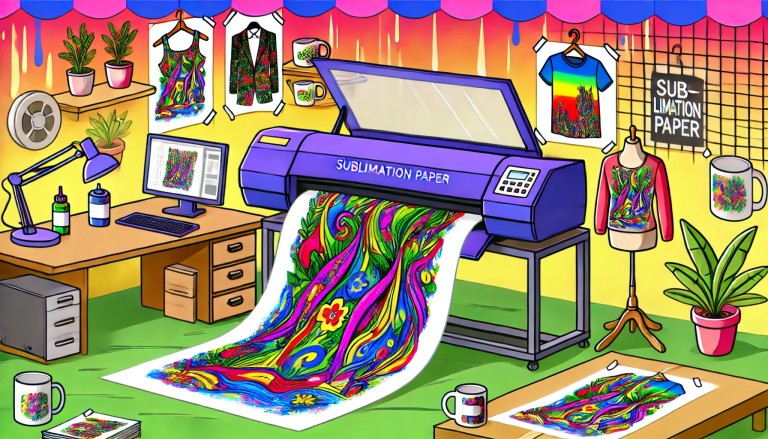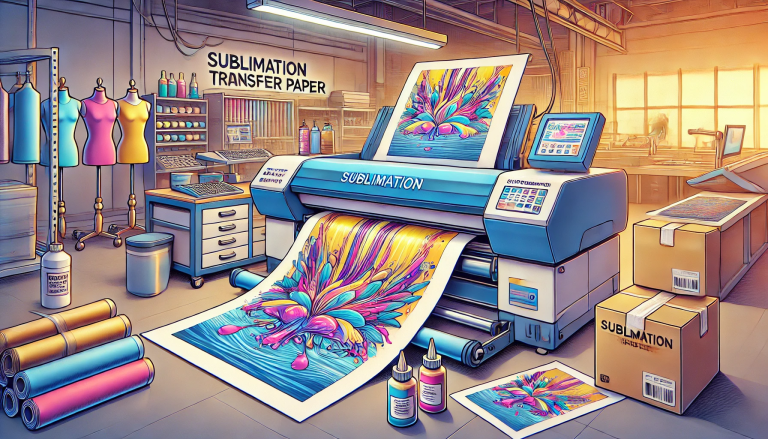Sublimation printing has gained immense popularity in recent years for its ability to produce high-quality, long-lasting, and vibrant prints on a variety of materials. However, a common question among both beginners and experienced printers is whether dark transfer paper can be used for sublimation. This article aims to address this question thoroughly, exploring the fundamentals of sublimation, the characteristics of dark transfer paper, and the practicality of combining the two. By the end, you will have a clear understanding of the dos and don’ts, as well as alternative solutions for printing on dark substrates.
1. Understanding the Basics of Sublimation Printing
To answer the core question, it is first essential to grasp how sublimation printing works. Sublimation is a chemical process where solid ink (sublimation ink) is converted directly into a gas when exposed to high temperatures (typically 380–400°F or 193–204°C) and pressure. This gas penetrates the surface of a compatible substrate, such as polyester fabric or polymer-coated hard goods, and then solidifies back into a solid state when cooled. The result is a print that is embedded within the material rather than sitting on top of it, which gives it exceptional durability, resistance to fading, and a soft feel.
A key point to note here is that sublimation ink only bonds with polyester fibers or polymer coatings. Materials that are not polyester-based, such as cotton, do not react with sublimation ink, making direct sublimation impossible. This is where transfer papers come into play, but not all transfer papers are suitable for sublimation.
2. What Is Dark Transfer Paper, and How Does It Differ?
Dark transfer paper is specifically designed for printing on dark-colored substrates, such as black, navy, or dark gray fabrics. Unlike light transfer paper, which relies on the substrate’s light color to show the print clearly, dark transfer paper includes a white opaque layer. This layer acts as a base, ensuring that the printed design remains vibrant and visible against the dark background. When heat is applied, the entire transfer (including the white base and the design) adheres to the surface of the substrate.
It is important to distinguish between dark transfer paper and sublimation paper. Sublimation paper is a porous, coated paper that is engineered to hold sublimation ink temporarily until heat and pressure trigger the sublimation process. In contrast, dark transfer paper (often referred to as “heat transfer vinyl paper” or “inkjet/laser transfer paper”) is designed for use with regular inkjet or laser inks, not sublimation ink. The adhesive and opaque layers in dark transfer paper are not compatible with the sublimation process.
3. Can Dark Transfer Paper Be Used for Sublimation? The Short Answer
No, dark transfer paper cannot be effectively used for sublimation. There are two primary reasons for this incompatibility:
First, the chemical composition of dark transfer paper is not designed to work with sublimation ink. Sublimation ink requires a porous, low-tack paper that allows the ink to vaporize and penetrate the substrate. Dark transfer paper, on the other hand, has a coated, adhesive layer that traps the ink rather than releasing it. When heat is applied, the adhesive in dark transfer paper will melt and stick to the substrate, but the sublimation ink will not be able to vaporize and bond with the material. This results in a poor-quality print that is likely to peel, crack, or fade quickly.
Second, the white opaque layer in dark transfer paper defeats the purpose of sublimation. Sublimation is valued for its ability to create prints that are embedded in the substrate, resulting in a soft, breathable finish. Using dark transfer paper would add a thick, rigid layer on top of the substrate, compromising the feel and breathability of the material—one of the main advantages of sublimation printing.
4. Alternative Solutions for Sublimation on Dark Substrates
While dark transfer paper is not suitable for sublimation, there are effective alternatives for achieving high-quality sublimation prints on dark substrates. The most common and reliable methods are:
1. Using Polyester-Blend Dark Fabrics: Sublimation works best on 100% polyester fabrics, but it can also be used on polyester blends (e.g., 50% polyester/50% cotton). However, the print will be less vibrant on blends, as the ink only bonds with the polyester fibers. For darker blends, using a higher polyester percentage (70% or more) will yield better results.
2. Sublimation on White Polyester Transfers (Then Applying to Dark Substrates): This method involves first sublimating the design onto a white polyester transfer sheet or patch. Once the design is embedded in the white polyester, the transfer can be applied to dark substrates using a heat press. The white polyester acts as a base, making the design visible against the dark background, while still leveraging the benefits of sublimation (durability, soft feel).
3. Using Polymer-Coated Dark Hard Goods: For hard substrates (e.g., mugs, phone cases, keychains), look for dark-colored items that have a polymer coating. The polymer coating allows the sublimation ink to bond, just like on light-colored polymer-coated goods. The dark color of the substrate does not affect the sublimation process as long as the coating is compatible.
5. Common Mistakes to Avoid
Many beginners make the mistake of trying to use dark transfer paper with sublimation ink, hoping to save time or money. This often leads to wasted materials and frustration. Other common mistakes include using non-polyester substrates for sublimation, using the wrong temperature or pressure settings, and not allowing the substrate to cool completely before removing the transfer paper.
Conclusion
In summary, dark transfer paper is not compatible with sublimation printing. The fundamental differences in how sublimation ink works and the design of dark transfer paper prevent successful results. However, this does not mean that sublimation on dark substrates is impossible. By using polyester-blend fabrics, sublimating onto white polyester transfers, or choosing polymer-coated dark hard goods, you can achieve vibrant, long-lasting sublimation prints on dark materials.
Understanding the limitations of different materials and techniques is key to successful sublimation printing. By sticking to compatible materials and following best practices, you can avoid common pitfalls and create high-quality prints that meet your needs. Whether you are printing for personal use or a small business, investing in the right supplies and taking the time to learn the process will pay off in the long run.




